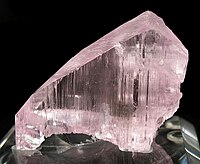Phyllosilicates

Phyllosilicates are a kind of mineral made up of tiny sheets that are stacked on top of each other like pancakes. Imagine you have a stack of pancakes on a plate, but instead of yummy pancakes, each layer is made of flat, thin sheets of minerals. These minerals are made up of silicon, oxygen, and other atoms that are arranged in a special way.
Now, if you look closely at each of these mineral sheets in a phyllosilicate, you'll notice they are kind of like little tiny mille-feuille pastries (sometimes called "Napoleon pastries"). Just like a mille-feuille pastry is made up of layers of pastry and cream, the phyllosilicate mineral sheets are made up of layers of atom-thin sheets that contain silicon and oxygen atoms.
These mineral sheets are often so thin that they are almost transparent, and they can have a special kind of electric charge on their surface. Because of this charge, phyllosilicates can be sticky and attract certain molecules, kind of like how you might attract tiny pieces of paper with a balloon that you rubbed on your hair.
Phyllosilicates can be found in many places around the world, from volcanic rocks to sedimentary rocks like clay. They're even found on Mars! Scientists study phyllosilicates to learn more about the geology of the Earth and other planets, but also as a way to understand how life might have started on Earth, too.
So, phyllosilicates are like tiny pancakes made of flat mineral sheets that are stacked on top of each other. These sheets have a special electric charge that helps them attract other molecules, and scientists study them to learn more about geology and the origins of life.
Now, if you look closely at each of these mineral sheets in a phyllosilicate, you'll notice they are kind of like little tiny mille-feuille pastries (sometimes called "Napoleon pastries"). Just like a mille-feuille pastry is made up of layers of pastry and cream, the phyllosilicate mineral sheets are made up of layers of atom-thin sheets that contain silicon and oxygen atoms.
These mineral sheets are often so thin that they are almost transparent, and they can have a special kind of electric charge on their surface. Because of this charge, phyllosilicates can be sticky and attract certain molecules, kind of like how you might attract tiny pieces of paper with a balloon that you rubbed on your hair.
Phyllosilicates can be found in many places around the world, from volcanic rocks to sedimentary rocks like clay. They're even found on Mars! Scientists study phyllosilicates to learn more about the geology of the Earth and other planets, but also as a way to understand how life might have started on Earth, too.
So, phyllosilicates are like tiny pancakes made of flat mineral sheets that are stacked on top of each other. These sheets have a special electric charge that helps them attract other molecules, and scientists study them to learn more about geology and the origins of life.
Related topics others have asked about:
